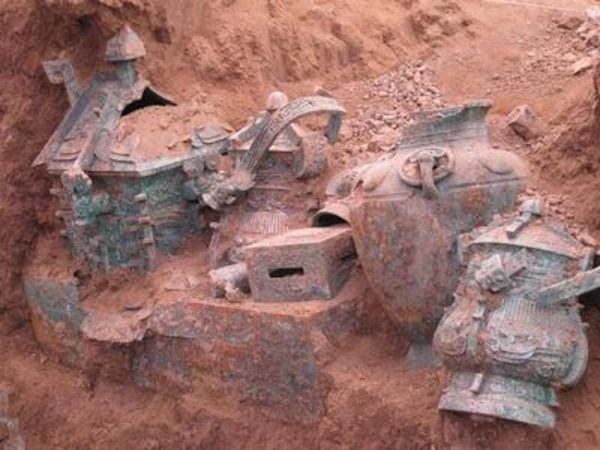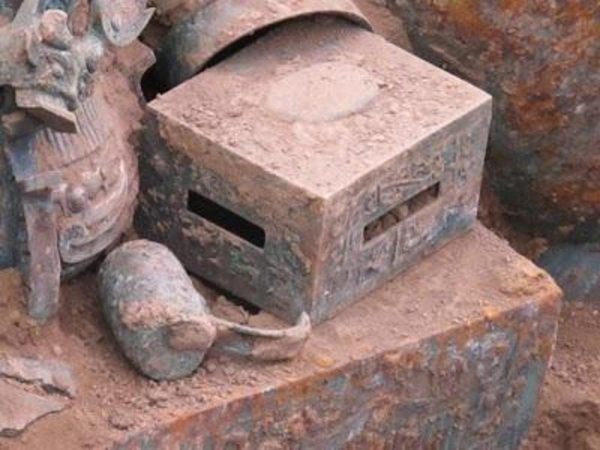A remarkable archaeological discovery in Shaanxi province, northwest China, has unveiled a wine vessel dating back 3,000 years.

Found in a nobleman’s tomb in the city of Baoji, the ancient bronze vessel from the West Zhou Dynasty (1046 BC-771 BC) contains what is believed to be the earliest wine in China’s history.
The liquid inside the vessel, one of six found in the tomb, was discovered when the vessel was shaken. Li Jun, director of the Baoji Archaeology Institute overseeing the excavation, stated that this wine is likely the oldest discovered in China.

Despite this intriguing find, the tightly sealed cover of the vessel prevents the identification of the liquid within due to a lack of appropriate tools at the excavation site.
Excavation at the site is ongoing, and additional bronze devices are expected to be discovered in the coming days. One notable artifact already uncovered is a 95cm-long “prohibition device,” the first of its kind found in Baoji.

Such devices emerged during the succeeding Zhou Dynasty as a response to the perceived corruption associated with excessive wine consumption during the earlier Shang Dynasty (1600 BC-1046 BC).
Ancient wine has deep roots in Chinese history, with evidence of residues over 9,000 years old found in ancient Chinese vessels. In a 2004 BBC report, archaeo-chemist Patrick McGovern identified the components of this liquid as “rice, honey, and fruit.”

China’s rich winemaking tradition is among the oldest globally, with this discovery adding a fascinating chapter to the country’s vinicultural history.
It is worth noting that the second oldest evidence of wine, dating back 7,000 years, was found in Iran. The historical significance of the Shaanxi discovery contributes not only to our understanding of ancient Chinese practices but also to the broader narrative of early winemaking across different cultures.





